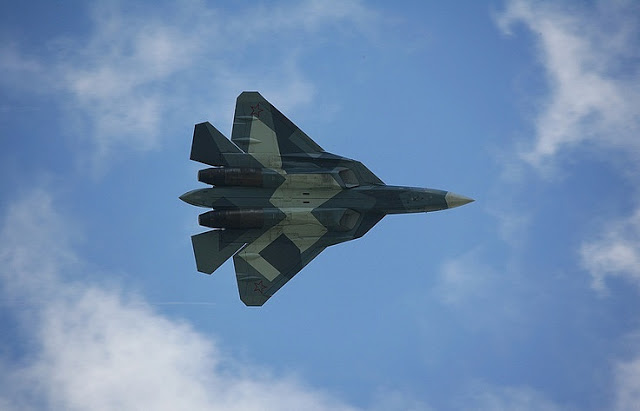Tests of the second-stage engine for Russia’s fifth-generation PAK FA fighter jet have been delayed a year and will start in 2018. Previously trials of the PAK FA main engine were due to begin in 2017, with the entire project to be completed by 2020.
The next-generation Saturn izdeliye 30—sometime referred to as the izdeliye 129—are the engines for the T-50. There are few details available about the izdeliye 30 engines, but the new powerplant is expected to deliver 24,054lbs dry thrust and 39,566lbs of afterburning thrust.
With the new engine installed, the PAK-FA should be able to offer kinematic performance comparable to the Lockheed Martin F-22 Raptor—cruising without afterburner at speeds exceeding Mach 1.5 with a maximum speed greater than Mach 2.0 at altitudes of around 60,000ft. “Performance-wise it certainly looks to compete with the Raptor,” one senior military official with extensive experience on U.S. fifth-generation fighters told me some time ago.
The Russians have developed active electronically scanned array(AESA) radars, infrared sensors and excellent electronic warfare systems, one of the big questions that remain is how well the Russians have integrated the jets’ avionics.
The Russians will probably be able to resolve technical glitches with the PAK-FA and field a capable operational aircraft.
The main geopolitical balance of power question is how many the Russians will be able to build and when the technology would be sold to India, China or other countries.

Brian Wang is a Futurist Thought Leader and a popular Science blogger with 1 million readers per month. His blog Nextbigfuture.com is ranked #1 Science News Blog. It covers many disruptive technology and trends including Space, Robotics, Artificial Intelligence, Medicine, Anti-aging Biotechnology, and Nanotechnology.
Known for identifying cutting edge technologies, he is currently a Co-Founder of a startup and fundraiser for high potential early-stage companies. He is the Head of Research for Allocations for deep technology investments and an Angel Investor at Space Angels.
A frequent speaker at corporations, he has been a TEDx speaker, a Singularity University speaker and guest at numerous interviews for radio and podcasts. He is open to public speaking and advising engagements.


